Poisonous and beautiful - it enchants those who once grew it in their garden, intoxicates with the most delicate aroma, makes them take it with them to their homes for the winter and does not let go for a number of years... Many fall into the sweet captivity of Brugmansia!
| Content:
|
Several years ago, this plant was classified as a member of the genus Datura (Datura). With the growing popularity and the emergence of a large number of new varieties, the Brugmansia genus has become independent, but seeds often go on sale under the old name “Datura”.
These two genera are easy to distinguish:
Datura |
Brugmansia |
|
|
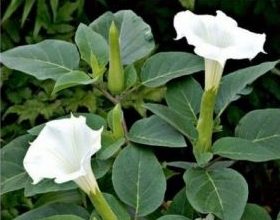 Datura |
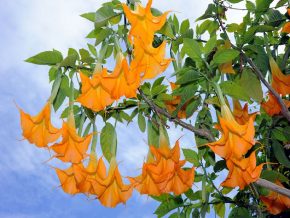 Brugmanisya Brugmanisya |
Brugmansia is native to South America. Natural habitat - subtropics and tropics: forests, hills, river banks, foothills. In such conditions, a tree grows up to 5 m tall.
In the south of Russia, Brugmansia is also capable of becoming a tree, but no more than 2.5 m. In the northern regions, this perennial plant requires wintering in a cool room and planting in open ground next spring.
Brugmansia is unusually decorative:
- amazes with its power and rapid growth,
- leaves, different in size and shape, alternate throughout the entire branch,
- densely covered with drooping large bell-shaped flowers from June to September,
- flower color - all shades from white to red, there are specimens with mixed colors,
- the aroma is subtle, pleasant, but unsafe (can cause headaches).
Planting Brugmansia seeds
Brugmansia serves as an exotic decoration for outdoor and winter gardens, greenhouses, houses, and apartments. Although the plant is poisonous, many gardeners have learned to follow simple rules and grow it at home without any problems.
Growing this plant from seeds in an apartment is not very difficult.
1. Timing of sowing seeds
Brugmansia is quite prolific.Up to a hundred seeds can be obtained from one pod, but the preservation of all the qualities of the mother plant is not guaranteed.
You can sow from January to March. Fresh seeds germinate in 7–10 days, while previously collected seeds require up to 50. The older the material, the earlier the sowing.
2. Preparing the soil for planting 
Any universal soil is suitable for germination, since at this stage Brugmansia does not have any special requirements.
To pick seedlings, you should stock up on light, non-acidic soil. You can use ready-made soils or mix two parts peat with one part humus and one part loam yourself. This mixture must be disinfected by calcination in the oven or by pouring a solution of potassium permanganate (3 g per 10 liters of water).
3. Preparing seeds for sowing
Growing Brugmansia from seeds is a long process. To speed it up, there are several proven methods:
1. Lightly scrape the shell of each seed with a knife, then place them in a warm solution of Heteroauxin or Kornevin for a day.
2. Soak the seed in a 3% hydrogen peroxide solution for 2 hours.
3. Build a greenhouse over the container with seedlings for the entire period until germination.
Sowing requirements:
- Seed placement depth is 5 – 10 mm.
- Place the container in the brightest place, cover the top with film.
- The required temperature for germination is 22 - 25 degrees.
- Periodically moderate soil moisture, avoid stagnation of water.
Germination time depends on the age of the seeds and germination conditions. It ranges from 10 to 50 days. After sprouts appear, the covering must be removed.
4. Caring for seedlings
For Brugmansia seedlings, it is necessary to select a south window. She is not afraid of direct sunlight.With a lack of light, the sprouts stretch out, their leaves lose their brightness, so it’s worth adding lighting.
Young plants require spraying 2 - 3 times a day. Watering should be moderate.
Growing temperature is 18 - 20 degrees during the day and 15 at night. When ventilating, seedlings must be protected from drafts.
When 4–6 true leaves appear, it is time to pick Brugmansia.
5. How to dive
Peat or plastic cups with a capacity of 500 ml are suitable for picking, as plants develop quickly.
A light, non-acidic soil is required. You can prepare the desired mixture yourself using the method described above, or purchase a ready-made one.
Brugmansia belongs to the nightshade family, so it is capable of producing many adventitious roots. When planting, the sprout must be buried down to the cotyledon leaves. Soon new roots will sprout, and the seedling will quickly begin to grow in size.
Basic care at this stage:
- watering - moderate,
- spraying with warm water – 2 – 3 times a day,
- fertilizing with nitrogen fertilizer - three weeks after picking.
If the original capacity of the glass is no longer enough, and the time for planting in open ground has not yet arrived, you need to transplant the Brugmansia into a 1.5-liter flower pot, where it will safely wait its time.
6. Seedlings are ready for planting in the ground
It must be remembered that the plant is tropical and reacts to low temperatures (+ 5, +7 degrees) by dropping foliage and delaying development.
Transplanting Brugmansia into open ground is possible only with the onset of consistently warm weather. In different regions - from mid-May to mid-June.
Brugmansia requires wintering indoors, so it is recommended to plant each seedling in a thick-walled ceramic pot with a capacity of 15 - 20 liters. This makes it easier to move it to another place. But growing Brugmansia in open ground is quite acceptable, although more troublesome.
Flowering will occur next year. In order for this process to bring joy and satisfaction, it is necessary to properly care for the plant in the first season of its life.
Our next article is devoted to this:
- How to care for Brugmansia outdoors and at home
- Brugmansia varieties
- Garden dope: planting, care and varieties with photos
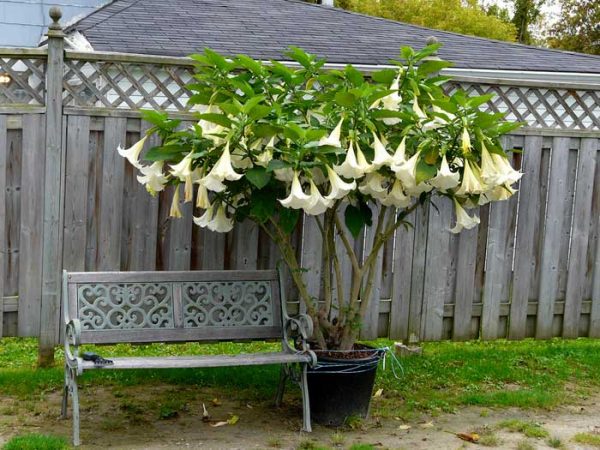
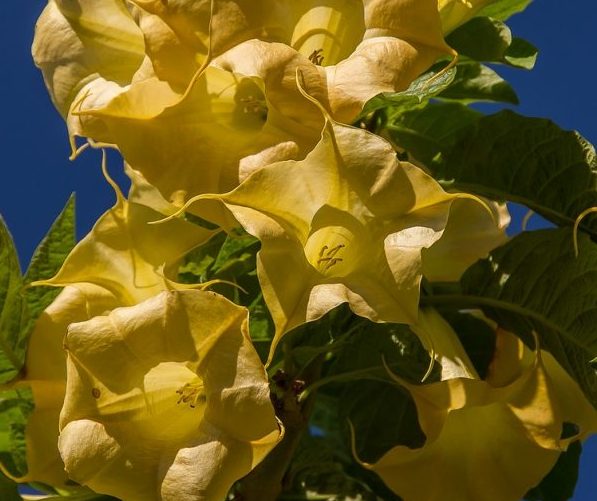
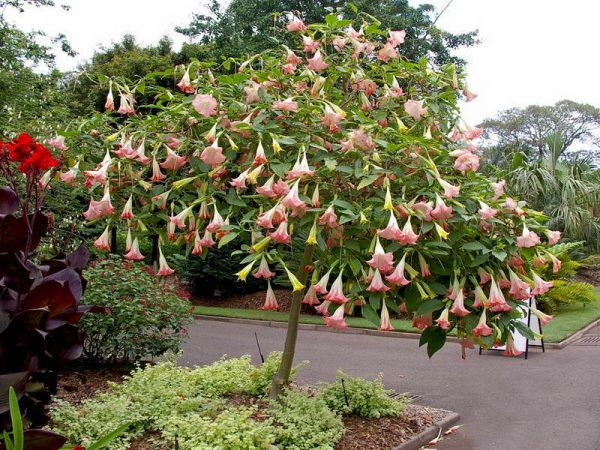

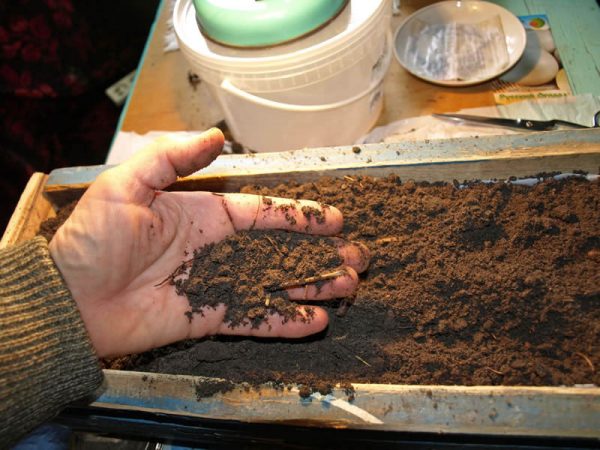
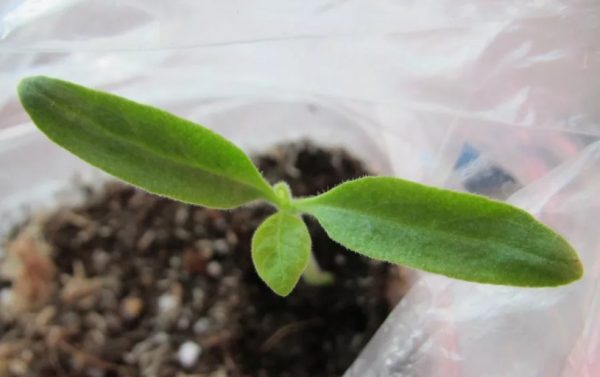
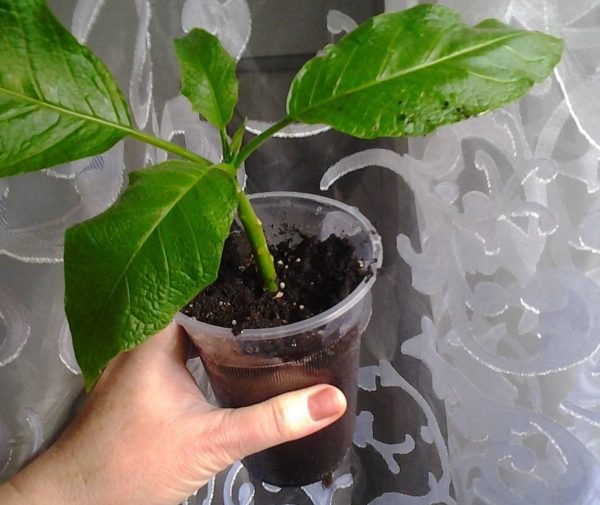
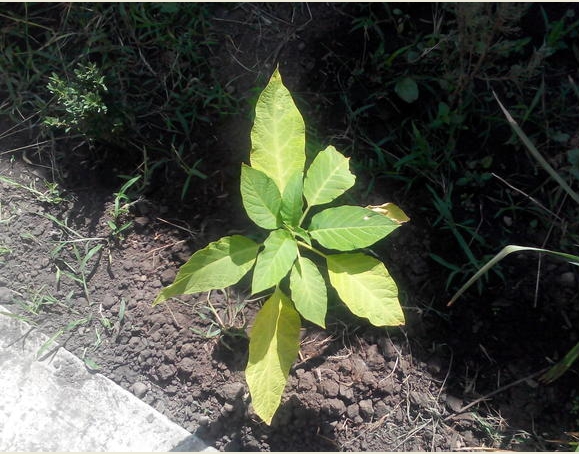


 (4 ratings, average: 3,25 out of 5)
(4 ratings, average: 3,25 out of 5) CUCUMBERS NEVER GET SICK, I'VE BEEN USING ONLY THIS FOR 40 YEARS! I SHARE A SECRET WITH YOU, CUCUMBERS ARE LIKE THE PICTURE!
CUCUMBERS NEVER GET SICK, I'VE BEEN USING ONLY THIS FOR 40 YEARS! I SHARE A SECRET WITH YOU, CUCUMBERS ARE LIKE THE PICTURE! You can dig a bucket of potatoes from each bush. Do you think these are fairy tales? Watch the video
You can dig a bucket of potatoes from each bush. Do you think these are fairy tales? Watch the video
 How our fellow gardeners work in Korea. There is a lot to learn and just fun to watch.
How our fellow gardeners work in Korea. There is a lot to learn and just fun to watch. Eye trainer. The author claims that with daily viewing, vision is restored. They don't charge money for views.
Eye trainer. The author claims that with daily viewing, vision is restored. They don't charge money for views. A 3-ingredient cake recipe in 30 minutes is better than Napoleon. Simple and very tasty.
A 3-ingredient cake recipe in 30 minutes is better than Napoleon. Simple and very tasty. Therapeutic exercises for cervical osteochondrosis. A complete set of exercises.
Therapeutic exercises for cervical osteochondrosis. A complete set of exercises. Which indoor plants match your zodiac sign?
Which indoor plants match your zodiac sign? What about them? Excursion to German dachas.
What about them? Excursion to German dachas.